|
I couldn't stand it. The “not so good” was not good enough. I agonized for months about what to do. In the end, I painted “The Beginning” again. I think it's drawn better. I submitted it to a juried show at AVA gallery in Lebanon, NH. “What messages will viewers glean from thir artwork 200 years from now?” provided the theme. Beginning Again was rejected. It did stick out like a sore thumb. Ah, well. Mel, however, had two photos accepted! All was not lost! Come to the AVA opening, Friday, July 12, 5-7 pm. Mel's photos are striking. This first attempt has some good qualities and some not so good qualities. It is more difficult than I thought it would be. Ink is more forgiving than the acrylic paint. I have mixed feelings about the blank canvass.
There are so many angles in the wheelbarrow, I had to draw it first. I had trouble getting it the right size and on the ground. The small masking tape pointers are for the paper position. I can use more pointers for the actual brush strokes. Eight more brush strokes this time. Once they are there they can't be changed. It is important to keep the angle of the wheelbarrow correct, the wheel between his feet and on the ground. He's in the correct place so his right leg will be just off the canvass. His head is pointed in the right direction. He's a little over seven heads tall. So far, all is well. As previously said, I paint from front to back. The placement of the first brushstroke, the brim of the hat, is critical. The lower right leg and shoe of the male figure will be off the canvass like the female figure. This is a coming together in a blank space to make a beginning. After the brim of the hat, the hair, followed by the upper left arm, the forearm, the hand, and the left handle of the wheelbarrow, in that order, are painted. Next will be the back, the left hip, left thigh, left lower leg, and the left foot, etc. All my past blogs have all been history. This is now. I am returning to ribbon people. I have used them before. I really like the movement and energy of the forms, their relation to negative space. They are challenging with ink and brush, but I cut myself some slack with over painting. This image is the 49th ink drawing. I could have gone on seeking perfection, but there has to be a limit. I took a linen canvass, gessoed it until it was relatively smooth, and coated it with Liquitex Titanium White mixed with Liquitex Gloss Medium. It took two coats, brushed first horizontally, then vertically. This is the paper. I mixed Liquitex Ivory Black with Liquitex Gloss M.edium to a brushable consistency with just enough black to create a nice gray when thin and a dark black when thick. This is the ink. I have to admit, if you”re fast, you can erase a brushstroke with a sponge dampened with water. This is not to be abused. The painting could go on forever. This image is the female figure. The male figure is next. Then I will be done with The Beginning. These paintings are two of my earliest. In exchange for prepping the studio and cleaning up afterward, I attended Irving Marantz's figure drawing class. These early paintings were first drawn on a gessoed canvass, then fixed, and finally glazed and scumbled with multiple coats of Liquitex acrylic paint until the drawing was covered. It's a castle in the air. It floats. One person thinks it's apocalyptic. If you look at Works on Paper, the comet bends the other way. I think the comet is energy. The painting crackles with energy. We live in a round, two story house on a hill overlooking a river valley. These are energetic times. It had been some time, years in fact, since I had painted a simple landscape. What a pleasure! By loading the brush with more than one color, the brushstrokes had increased definition. This resulted in a picture that was rich and bright. Our relationship with nature is difficult. “Gardening” is an example. Like in a real garden, the closer you get the more you see. The topiary, while beautiful, seems artificial. As I mentioned in “About,” it's pointless to plant in the company of chickens. The carefully mulched garden is too orderly. Nature doesn't like that. The tree has no leaves. When Mel was diagnosed with brain cancer and given 6 weeks to live, we turned to alternative healing and eventually studied Oriental medicine with Tom Tam in Boston. We still practice Tui Na on one another. Every morning we do our Tai Chi Dao Yin exercises. After more than twenty years, Mel is good. I am good. How many Lots are there today? Millions. The suffering is staggering. This painting was done in 1990, during the first Iraq war. Now there are many wars. We have learned nothing. Mel and I have a son. We are a family of three. The ink drawing on this website's title page was practicing for this painting. The drawing and the painting were destroyed in our house fire. Definition: A flight past a point, especially the close approach of a spacecraft to a planet or moon for observation. If this blue bird is a Corvus, like a crow, it has the intellectual capacity of a 6 or 7 year old human. We have a lot of crows. I think that is an underestimate. Look one in the eye. The old red house from the back towered above you. I wonder what the bird thought of what it saw? Towering obviously wouldn't impress it. The director of the Manchester Institute of Art saw my slides in a state repository and offered me a show. I was short on new work so I had to be productive in a hurry. We have a flower garden with a rock border full of poppies. In order to make the poppy stand out, I balanced the reflection coefficients of the orange and the gray. It's psychedelic.
Deliberate painting is like music. A musician plays an instrument and creates a note with pitch and volume. A deliberate painter puts paint to canvas and creates an image. The brushstroke is the instrument. Its color is the note. Its size is the volume. The notes interact to create a piece of music. The brush strokes interact to create a painting. A painting is a moment in orchestral time. The soil behind the red house barn was wonderful. It was a barnyard, after all. Mel grew vegetables and flowers including huge delphiniums. I had fun with the negative space in this picture. Delphiniums, of course, don't smell. We purchased a canoe. Having grown up in the west, I found it exciting to own such a thing. As we paddled the winding Connecticut river in our canoe, a heron took flight. I was struck by it's visual relation to the environment. As it flew by the trees lining the bank, it's camouflage was effective though not obvious. It was the shapes, not the colors. I had forgotten the beautiful New England fall. I wondered if there was a last to fall leaf. Some oak leaves stay on the tree all winter. This is not an oak tree. I guess the answer is “yes” for some trees like this one. “Suenos de Amor”, ”Dreams of Love”, the old red house needed some work. First, we replaced the missing stones in the foundation to keep the animals out of the basement. Second, we took down the brick chimney and replaced it with a lined cement block chimney. Of course, when the house was built, they staggered the chimney and sat the main house beam on it. The beam never moved when we took down the chimney, but staggering the cement blocks was a trip. Third, we installed a metalbestos chimney in the kitchen. With a woodstove in the cellar and a woodstove in the kitchen it was warm enough downstairs. Of course, you could still see your breath in the mornings upstairs. Mel wrote poetry by the stove in the cellar during the day. Next to our house was another house with a detached barn from the same period. The town voted to buy the property and build a septic system for the village. When they came to clear the buildings, the old house went quickly and easily. The old post and beam barn was another matter. Assembled and pegged with green hemlock, it had welded itself together over the hundred plus years since it was built. It refused to fall down after the first cut of several strategic joints. They finally had to disassemble it piece by piece. We had employment opportunites as a teacher in Sitka, Alaska; Fort Collins, Colorado; Claremont, New Hampshire; Bellows Falls. Vermont; and Bradford, Vermont. After much soul searching, we chose Bradford. We bought a house just across the Connecticut River in Piermont, New Hampshire, an easy commute to Bradford High School. The house, built in 1874, was beautiful. Built into a hill with an attached barn, it was a full two stories from the back. The road from El Paso to Cloudcroft, New Mexico, went north through the desert up the Rio Grande river valley. After many miles we turned east and drove toward the mountains. The road went through a tunnel where the landscape changed from desert to forested mountains. We were always so excited. It was a sylvan song. When it came time to leave everyone was ready except for Mao, our dark brown Burmese cat. He would disappear up the mountain and watch us call, coax, and plead for him to come. Eventually, one of us would find him and carry him to the car. He loved camping!
Mel's pregnancy prompted several readjustments. First we moved to an apartment in an old downtown mansion which was uncomfortably cold. Then we found a very warm apartment in an old but once fashionable building, also down town, a block from Hotel Dieu Hospital. When Mel went to the hospital to have our son, we signaled one another with flashlights after dark. I went to night school and became certified to teach. I took a position at San Elizario High School where I taught English and Spanish. To escape the city we went camping in the mountains in New Mexico with the dog and cat. Our young son sometimes needed help on our hikes.
Mel's job commute to Southampton Hospital was too much. There were no local jobs so we left Greenport and went to Poultney, Vt., where Mel's mother lived. Again, no jobs. We flew to El Paso, Tx., to both introduce Mel to my parents and to look for jobs. Success! We returned to Poultney for our stuff, and back to El Paso we went in her VW bug. Mel manned the store, and I started a do-it-yourself frame shop at Greenfield Gallery. We rented an apartment high above the city with views of Mexico. I spread a tarp on the carpet for a studio. Mel posed many hours for “The Golden Bather.”
|
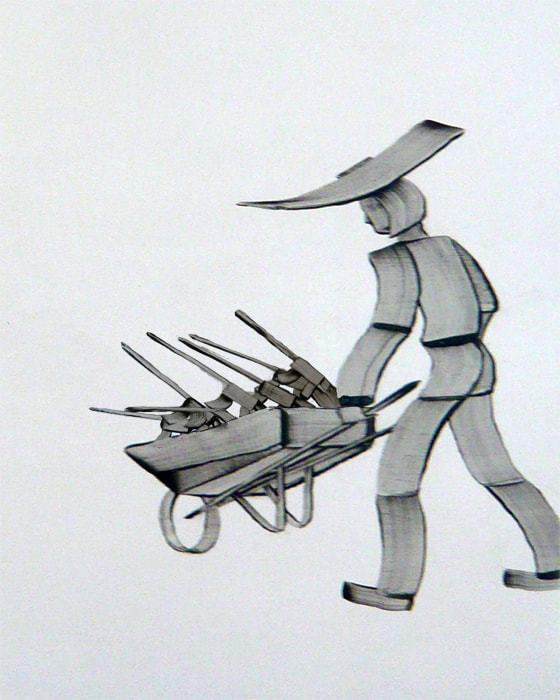



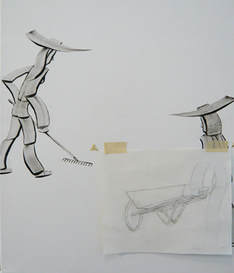




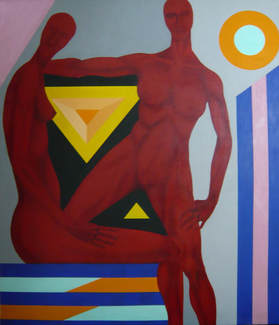







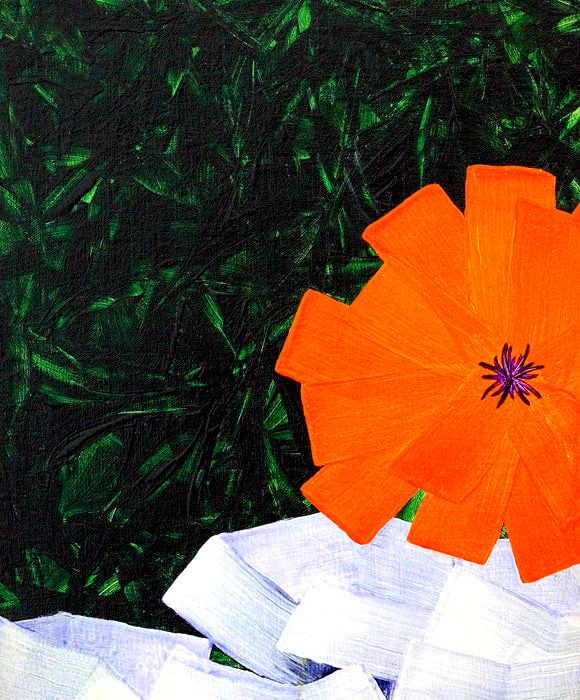



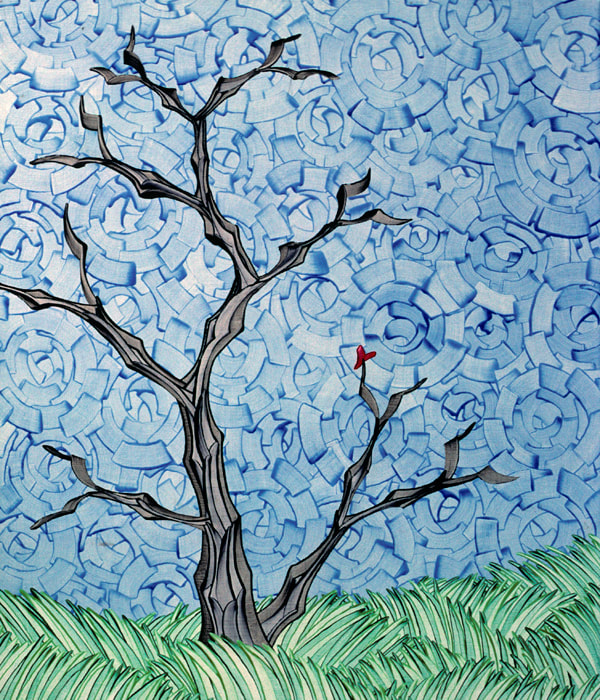


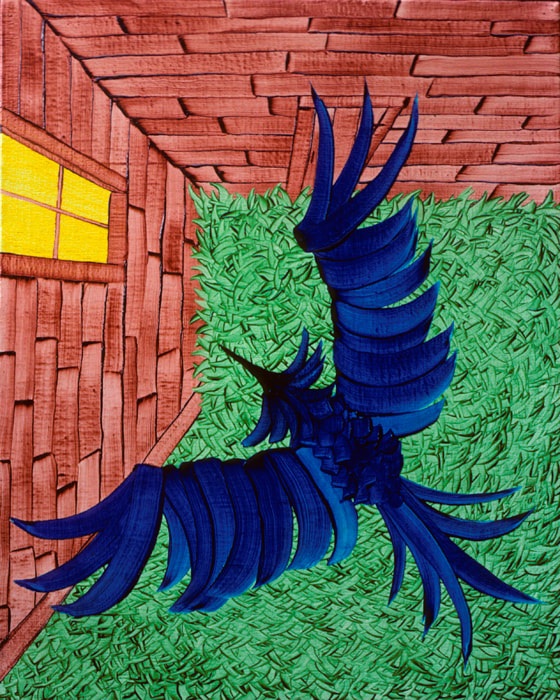


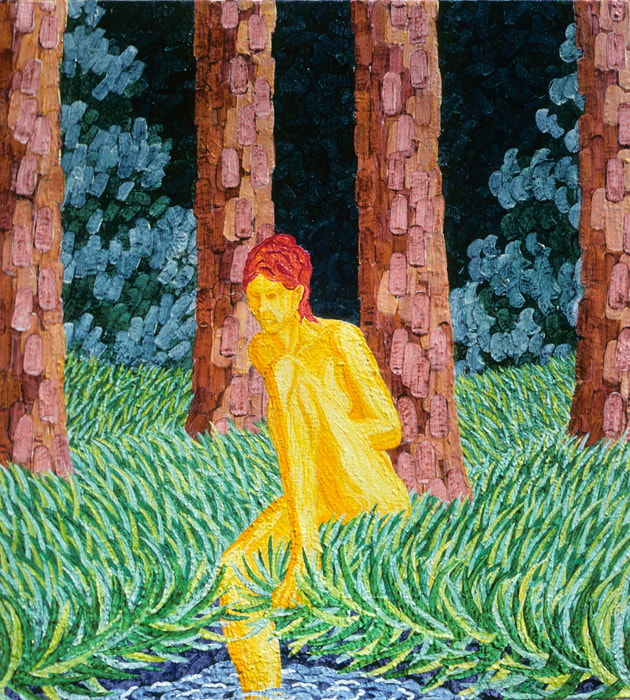
 RSS Feed
RSS Feed